
























































































































































































By Tiffany Klaphake tiffany.k@dairystar.com
MAPLE LAKE, Minn. — Dan Elsenpeter and his wife, Erica, have been making maple syrup together ever since they started dating. Now, more than 20 years later, their maple syrup operation and their family have grown.
Dan recalls his dad cooking maple syrup over an open re in the woods when he was a child. Dan reexperienced maple syrup making in 2003 when Erica’s family was experimenting with cooking sap. Dan went home and found the original 25 taps his dad used and started tapping maple trees around his home farm that same spring.
“Nobody in Erica’s family cooks anymore but I kept going,” Dan said. “I kind of took it and ran with it. It works well for me because I am here all the time.”
At rst, Dan brought his sap to Erica’s family, but soon he had a cooker built so he could cook down his own sap.
“I had a kid who used to work for us who was taking a welding class at school,” Dan said. “He built a 2- by 4-foot stainless steel pan for me. I built the re pit out of a used fuel barrel for it to sit on.”
Since then, Dan and his family have been putting out more and more taps each year, slowly expanding their operation.
“When the kids were little, we tapped about 100 trees and Erica and I did everything ourselves, usually with a car seat strapped in the side-by-side,” Dan said. “That was a lot of work. Now, the kids have really gotten into it.”
Today, Dan and Erica, along with their eight kids — Henry, George, Harvey, Ralph, Dorothy, Leroy,
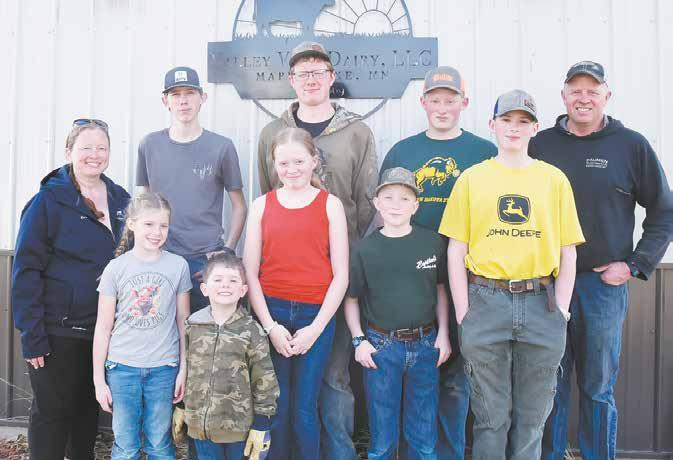
Pearl and Norman — set more than 300 taps every spring.
Dan and his brother, Luke, milk 200 organic cows in a swing-16 parlor at their sesquicentennial farm near Maple Lake. The kids help on the farm and with the maple syrup. Everyone plays a role in the syruping operation.
The kids collect the sap, pour it into a tank in the back of their side-by-side and bring it back to the farm. Dan oversees the cooking before he and Erica bottle the syrup.












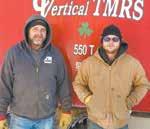



















Many of the Elsenpeters’ neighbors let the kids tap trees on their property in exchange for some of the nal product.



or it might be a month and a half,” Dan said. “You just never know what Mother Nature will bring.”






As their maple syrup production increased, the Elsenpeters became more efcient through upgrading their cooker. The rst homemade cooker they used worked for about ve years. Then, Dan found one in the ne print of an auction listing. That worked well for the next 15 years until last year, when they again upgraded.
“The old one couldn’t keep up,” Dan said. “We had so much sap coming in.”
With the old evaporator, the Elsenpeters were cooking down 35 gallons of sap per hour. With the new cooker, they have increased to about 60 gallons.
On average, the Elsenpeters get between 60-80 gallons of nished maple syrup each year. On good years, the family can get around 100 gallons of syrup. The sap to syrup ratio is 40:1, meaning it takes 40 gallons of sap to make 1 gallon of syrup.
With the new cooker and the season off to a good start, they hope to reach 100 gallons of syrup this year, Dan said.
“The season might be two weeks,
One reason the maple syrup works well for the Elsenpeters is the time of year it is harvested.
“Everyone has cabin fever and wants to get out,” Erica said. “We can’t get in the elds yet or do much else. Everything is mud or frozen.”
In years when the Elsenpeters get a lot of maple syrup, they take it along with cuts of meat to the Makers and Growers Market in Maple Lake that began in 2023.
“We aren’t in the business to sell it; it’s mostly just for fun,” Dan said. “We hand some syrup out to all the family and neighbors that let us tap their trees. It’s more about everybody getting out and having a good time.”
One night every spring, the Elsenpeters invite their neighbors over for a party while the cooker is going. They grill burgers and everyone brings a dish to share.

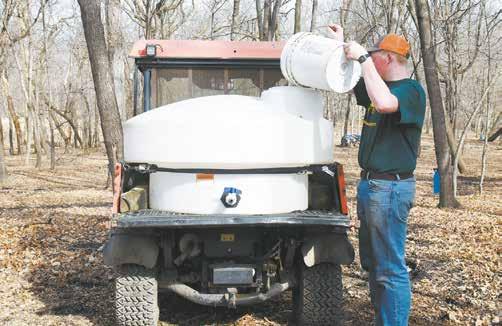
“We have one neighbor who grills breakfast sandwiches; they’re just amazing,” Dan said. “We dip the sandwiches in maple syrup and people talk about that party for the rest of the year. We pick a night when we will have the cooker going so it’s nice and warm in the shed and you can smell the syrup in the air.”
Dan said he has gotten a lot of questions about maple syrup over the years.
“People ask, ‘What do you put in it to make it taste so good?’” Dan said. “The answer is nothing. It’s just sap from the trees cooked down. Not many people do it, and the end product is
something that everybody likes.”
The Elsenpeters said they have a lot of memories from making maple syrup and they look forward to creating many more.
“We’ve sat out in the sugar shack in a snowstorm cooking and all the kids are bundled up playing cards,” Dan said. “I like cooking it and the end product, but (also) people this time of year are looking for an excuse to get together.”
Erica agreed.
“I like that it’s something different to do in the evenings as a family,” she said.


















The Trump tariff tit-for-tat morphed, and dairy became front and center. President Trump said late last week, “Canada has been ripping us off for years on lumber and on dairy products,” and he cited Canada’s 250% tariff on U.S. dairy exports, warning that the U.S. would match those tariffs. Canada’s supply management program has long been a bone of contention for the U.S. dairy industry, and it remains a “sacred cow” among Canadian dairy farmers.
Meanwhile, China lifted its ban on milk and dairy products from Germany, which could hurt U.S. dairy exports to that country, especially on whey protein. And, Reuters reported, “China announced tariffs on over $2.6 billion worth of Canadian agricultural and food products on Saturday, retaliating against levies Ottawa introduced in October.”
The European Union placed tariffs on U.S. feed grains in response to Trump’s levies on steel and aluminum, which will hurt European livestock producers. Trump cited the large EU trade surplus for his actions.
Becky Rasdall Vargas, senior vice president of trade and workforce policy at the International Dairy Foods Association, said, “It is accurate that Canada imposes a tariff of approximately 250% on U.S. exports of certain dairy products into Canada, and even more with Canada’s 25% retaliatory tariffs in place. However, that tariff would only apply if we were able to reach and exceed the quota on U.S. dairy exports agreed to under the U.S.-Mexico-Canada Agreement. Frustratingly, the U.S. has never gotten close to exceeding our USMCA quotas because Canada has erected various protectionist measures that y in the face of their trade obligations made under USMCA.”
“U.S. dairy is grateful for the Trump Administration’s efforts to hold Canada accountable on these protectionist measures,” the IDFA said. “At the same time, a prolonged tariff war with our top trading partners will continue to create uncertainty and additional costs for American dairy farmers, processors and our rural communities. We urge Canada and the United States to negotiate a resolution to these issues, both Canada’s trade barriers to U.S. dairy exports and the tariffs, as expeditiously as possible.”
Back on the home front, the overall U.S. economy is showing signs of strength. Unemployment on March 7 showed job growth in most major sectors and Consumer Price Index data this week was weaker than expected, although still well above the 2% federal mandate. Jobless claims have also fallen.
Checking demand, the United States Department of Agriculture’s latest Dairy Supply and Utilization report showed that domestic cheese demand slipped about 1% in January from a year ago. Cheese exports, however, were up 21.8% and picked up the domestic slack, so overall disappearance was up 0.7%, according to HighGround Dairy’s Curtis Bosma in the March 17 Dairy Radio Now broadcast. Bosma added that the U.S. is not typically a major cheese exporter, but there was enough exported in January to offset the lower domestic demand.
Butter production has been running high, thanks to an abundant cream supply, Bosma said. Butter de-
mand domestically was down for the second month in a row, off 3.3% from a year ago; however, exports were up, so overall usage was only down 2%. Again, Bosma said that we are not typically a major butter exporter but actually a net importer, but cheap U.S. prices on cheese and butter have made the U.S. competitive on both.
That said, Bosma pointed out that there are different spec issues in terms of what kinds of butter and cheese are made in the U.S. versus what global buyers are looking for, so price is not the only factor. He also cited the ongoing tariff issues as a factor and said Mexico is a very important market for U.S. cheese and represents 35%-40% of U.S. cheese exports.
Nonfat dry milk was “the dog” of this report, Bosma said. Powder demand has been struggling the past year or so as production is signicantly outpacing demand. Both domestic and global demand were hurting, making overall utilization down 20.7% from a year ago. This caused stocks to swell, he concluded, up 42% from a year ago at the end of January.
Dry whey utilization was down 4.9% overall, with domestic use down 13.9%, while exports were up 10.1%, according to USDA.
Speaking of net imports, you’ll recall I reported last week that U.S. milk equivalent exports in January were up 1.1% from a year ago. On the other side of the coin, the U.S. imported 37.9 million pounds of cheese, up 21.8% from a year ago. Butter imports amounted to 16.7 million pounds, up 28.2%.
And, while uid milk sales saw a nice 2.6% rise in December from a year ago, January sales tipped back a bit. The USDA’s January data shows packaged sales at just under 3.9 billion pounds, down 0.5% from January 2024. Conventional product sales amounted to 3.6 billion for the month, down 1.0% from a year ago. Organic sales, at 276 million pounds, were up 6.5% from a year ago and represented 7.2% of total milk sales in the month.
Whole milk sales totaled 1.4 billion pounds, up 1.4% from a year ago. Whole milk represented 35.8% of total milk sales for the month. Skim milk totaled 161 million pounds, down 5.3% from a year ago.
The gures represent consumption in Federal market orders, which account for about 92% of total uid sales in the U.S.
The Agriculture Department again lowered its milk production forecast in its latest World Agricultural Supply and Demand Estimates report, citing lower expected output per cow more than offsetting slightly higher cow inventories.
2025 production and marketing were projected at 226.2 and 225.2 billion pounds, respectively, down 700 million on both. If realized, both would still be up 300 million pounds or 0.1% from 2024.
Imports were unchanged on a fat basis and reduced on a skim-solids basis. Exports were lowered on a fat basis, primarily due to lower cheese exports.
On a skim-solids basis, exports were lowered due to lower expected shipments of cheese, dry skim milk products and lactose. Domestic use was increased on both a fat and skim-solids basis, according to the WASDE.
Cheese, butter, nonfat dry milk and whey price forecasts were all lowered, based on recent prices.




The Class III milk price was lowered on the lower price expectations for cheese and whey. The Class III was projected to average $17.95 per hundredweight, down from last month’s estimate of $19.10, and compares to the 2024 average of $18.89 and $17.02 in 2023.
The Class IV price estimate was also reduced due to lower butter and nonfat dry milk prices. It is projected to average $18.80, down from $19.70 a month ago, and compares to $20.75 in 2024 and $19.12 in 2023.
This month’s corn outlook was unchanged, but the report said, “U.S. tariffs on Canada and Mexico have been suspended until April 2 for all products covered under USMCA, which include most agricultural products in the WASDE. Reciprocal tariffs are also scheduled to begin on April 2. However, until these are in effect, WASDE does not incorporate them into commodity forecasts.”
The season-average corn price was unchanged at $4.35 per bushel. Global production was forecast 3.2 million tons higher to 1.496 billion. This month’s foreign coarse grain outlook is for larger production, reduced trade and smaller ending stocks relative to last month. Foreign corn production is higher as increases for India, Russia and Ukraine are partly offset by declines in South Africa and Mexico.
Soybean supply and use projections were unchanged this month but included higher exports and lower soybean oil used for biofuel. The season-average soybean price was projected at $9.95 per bushel, down 15 cents from last month. Soybean meal and oil prices were unchanged at $310 per short ton and 43 cents per pound, respectively.
Global soybean supply and use forecasts include nearly unchanged production, higher crush and lower ending stocks. Higher production for Ukraine, Mexico and Australia is offset by lower production for South Africa, the WASDE said.
The week ending March 1 saw 56,100 dairy cows sent to slaughter, up 4,500 from the previous week but 3,700 or 6.2% below that week a year ago. Year to date, 427,600 head had been culled, down 89,100 or 17.2% from a year ago.
Cash dairy prices remained volatile in the unsettled, tariff-impacted waters. After dropping almost 30 cents the previous two weeks, the Cheddar blocks marched back up to $1.7550 per pound Thursday, but they closed Friday at $1.6925, 7 cents higher on the week and 22.25 cents above a year ago.
The barrels sunk to $1.6050 per pound Monday, lowest Chicago Mercantile Exchange price since Dec. 2, 2024, but they rallied to $1.73 Thursday, only to close Friday at $1.69, up 6 cents on the week, 24.75 cents above a year ago, and only a quarter-cent below the blocks. Sales totaled 26 loads of block on the week and 13 of barrel.
StoneX said in its March 11 Early Morning Update, “Cheese demand domestically remains weak while the market expects more milk in the coming months and we battle with the threat of reciprocal tariffs, more so in Canada and China it seems, but that could change next week.”








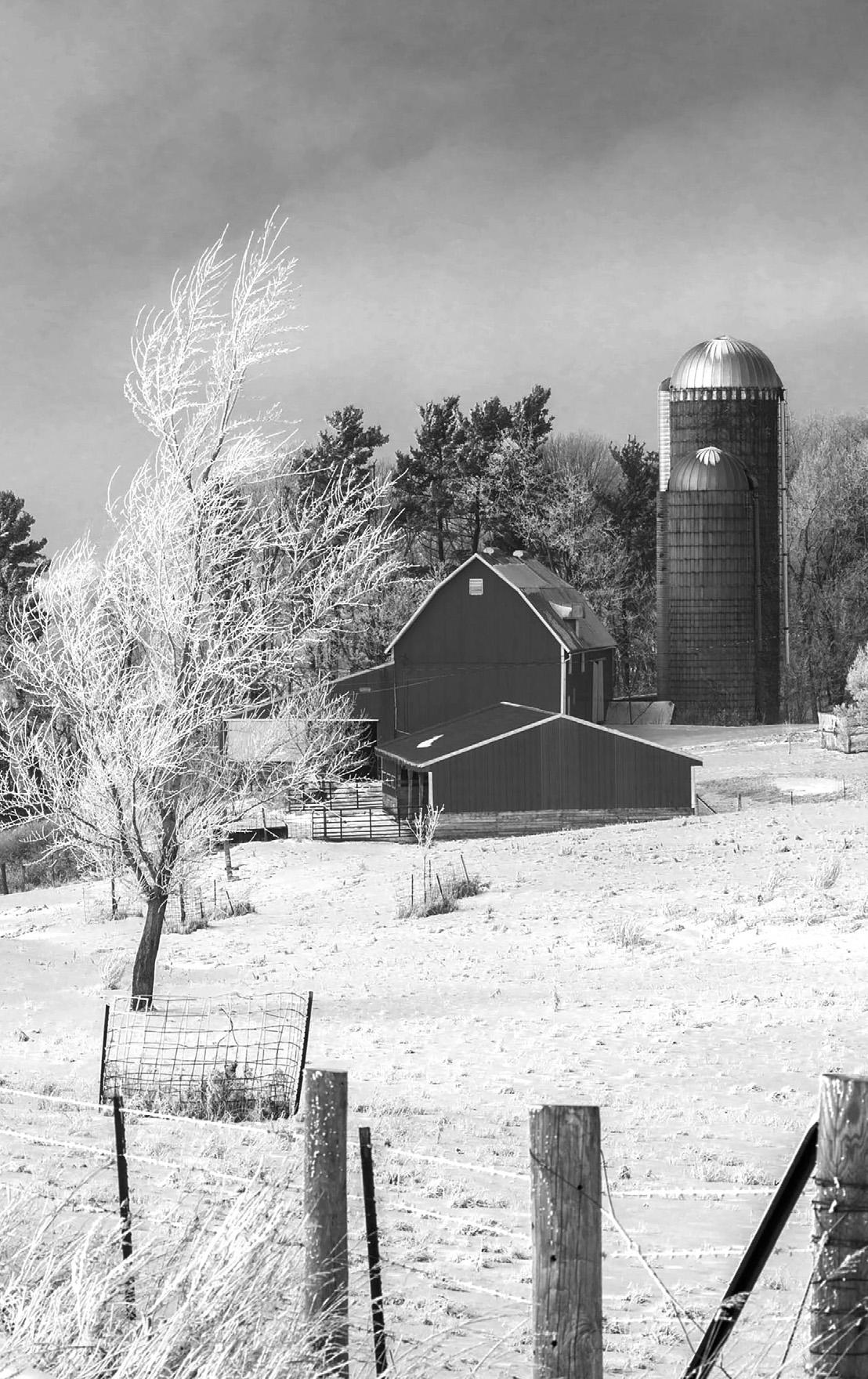


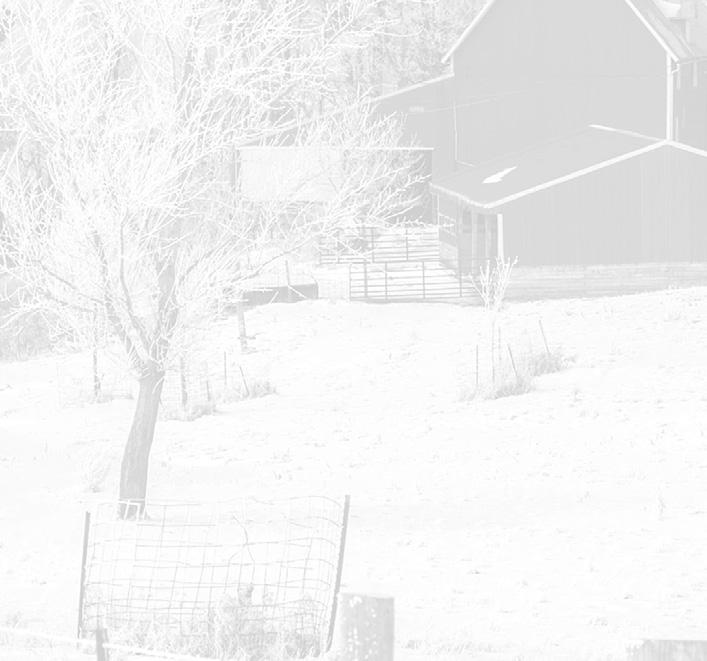






On a brighter note, StoneX said, the good trading we’re seeing “kind of legitimizes the idea that there is good demand for cheese, at least around current levels.” Keep in mind, world cheese is selling above $2 per pound.
Cheesemakers in the central U.S. continue to say production is active, according to Dairy Market News, despite some plants being down due to inventory or maintenance activities. Cheese availability has grown. Some contacts say they are now able to offer a few more loads on the spot market than in previous weeks. For most cheesemakers, this has been a rare opportunity for most of 2025. Milk availability is somewhat stable when compared to previous weeks. Mid-week spot milk prices ranged $2-under to 25 cents-over Class III. Last year, they ranged from $3.50-under to 50 cents-over Class III. Despite some bullish market price movement this week, more cheesemakers and market contacts view near-term tones with uncertainty, according to DMN.
Demand for Class III milk from western cheese manufacturers is steady, and seasonally strengthening milk production is sufciently accommodating demand. Cheese production is mixed. Some vats were less busy recently due to some unplanned downtime. Although lighter production schedules are few, some manufacturers describe their inventories as snug. Cheese demand varies from moderate to steady, according to DMN.
CME butter crept to $2.34 per pound Wednesday. It closed Friday at $2.3425, up 3.25 cents on the week but 48 cents below a year ago. There were 38 sales on the week, with 22 on Tuesday alone.
Central butter plants say retail customers are starting to show more interest ahead of the spring holiday season. Food service demand has been lackluster. Production has been very active, but cream offers have nally begun to slow.
This was an expectation ahead of the spring holidays, but cream is still widely available, though multiples are starting to tick higher week by week. Last year during week 11, multiples ranged from 1.14 to 1.27, whereas this year at mid-week they ranged from .95 to 1.08. Butter availability is ample, DMN said.
Affordable cream continues to be readily available in the West, though
demand is slightly stronger. Cream multiples are holding steady. Plenty of cream continues to make its way to the churn. Butter production is seasonally stronger, and inventories are building for later seasonal demand and storing for later seasonal micro-xing. Butter demand is moderate to steady. Domestic prices are competitive with international prices, but unsteady factors are creating some reluctance from international buyers, according to DMN.
The March 13 Daily Dairy Report said cream multiples have not been this low since the height of the coronavirus pandemic, and milkfat is pouring into Class II products and butter churns.
Grade A nonfat dry milk regained a little ground this week, inching back to $1.16 per pound Tuesday, but gave it back Friday, closing at $1.1550, unchanged on the week and 0.75 cents below a year ago, with nine sales on the week.
Dry whey closed Friday at 45 cents per pound, down 4 cents on the week, lowest since June 5, 2024, but still a half-cent above a year ago. There were ve sales on the week at the CME.
The March 13 Class III futures settlements had the March contract at $18.59 per hundredweight; April, $18.10; May, $18.14; and June at $17.74, with an $18.70 peak in October before heading back down.
Tuesday’s Global Dairy Trade Pulse saw 4.38 million pounds of product sold, up from 4.33 million on the Feb. 25 Pulse and 99.4% of the total offered. Singapore Exchange futures are pointing toward a slight decrease for the March 18 event, StoneX said.
This week’s Pulse saw another signicant decline, 6.1%, in skim milk powder prices while whole milk powder stayed at. “Futures are projecting skim milk powder to bounce back from the value traded on the GDT Pulse while all other products are expected to move lower,” StoneX said.
Dairy Market News reports that U.S. milk production is undergoing a strengthening trend as spring ush approaches. A few manufacturers in the West describe milk intakes as falling below expectations, while the Eastern intakes are higher than anticipated. Central cheesemakers indicate that spot loads of milk have become slightly more available, especially when neighboring plants have reduced schedules.

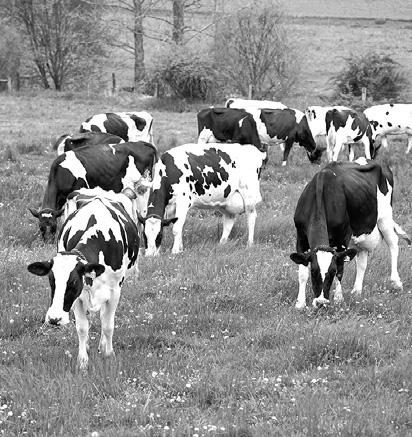


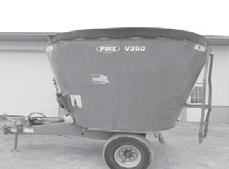
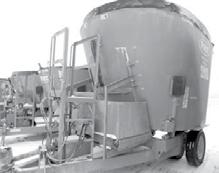


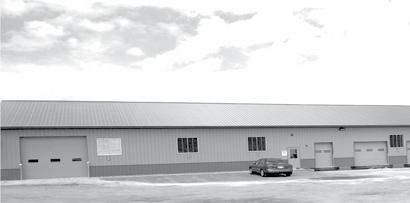



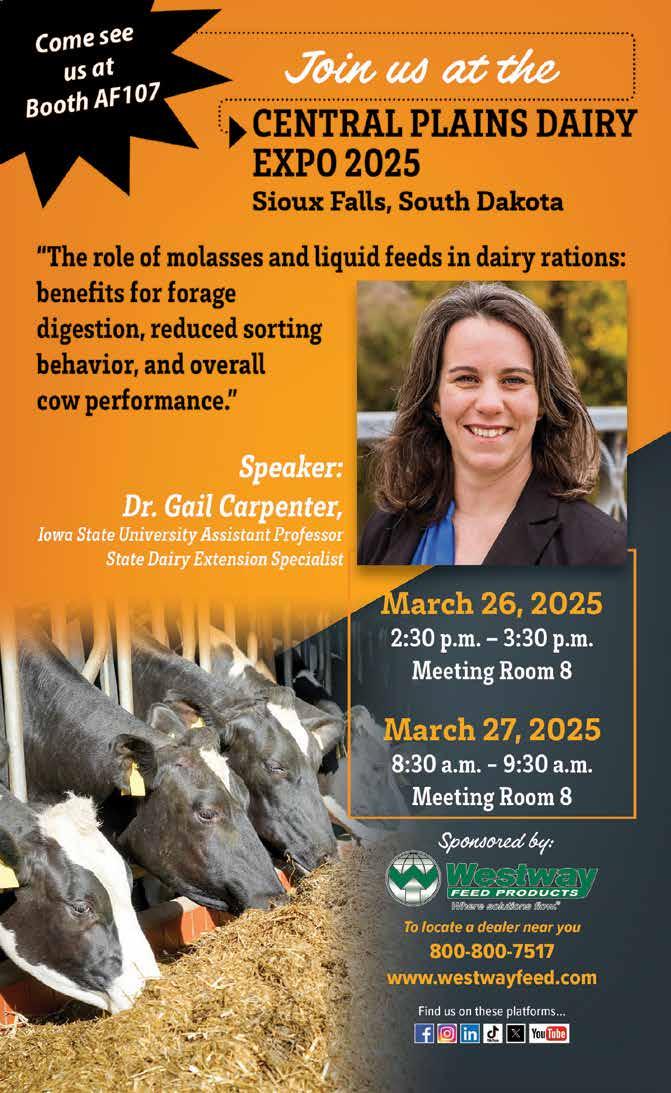
















history of
By Danielle Nauman danielle.n@dairystar.com
Editor’s note: Information for this article was gathered from the Holstein Association USA and the books: “Progress of the Breed: The History of U. S. Holsteins” by Richard H. Manseld and “Holstein-Friesian History” (Diamond Jubilee edition, 1960).
What does the ideal dairy cow look like? If 10 dairy producers were polled with that question, there would likely be 10 different answers. A hundred years ago, a committee of pioneering registered Holstein breeders learned exactly that.
The foundation for determining what comprised the ideal
Holstein cow began after the 1921 show season. According to the 1960 Diamond Jubilee edition of “Holstein-Friesan History,” breeders and exhibitors were becoming dismayed at the wide variations in placings made by judges at shows around the country. The differences were so stark “Holstein-Friesan History” said, that some enterprising exhibitors would travel the circuit with additional animals, increasing their ability to exhibit animals that t the patterns of judges they might encounter.
Minnesota Holstein breeder Axel Hansen suggested convening a conference of leading judges, breeders and exhibitors to take on the task of setting standards of uniformity.
The board of directors of the Holstein-Friesian Association of America took the reins and brought a group of 40 stakehold-
Turn to HOLSTEIN TRUE-TYPE | Page 12



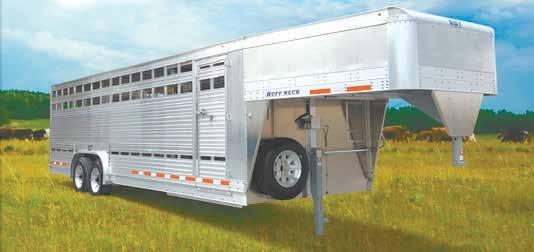

















ers together in March 1922 at the Brentwood Sale in Philadelphia, Pennsylvania. Wisconsin’s Fred Pabst, a member of the Holstein-Friesian board, presided over the meeting.
The executive secretary of HFAA suggested a series of lantern slides be prepared and distributed showing typical animals, with the goal being to promote uniformity of type. That idea eventually led to the paintings of the True-Type Cow and Bull.
The lack of dimension in the paintings did not satisfy Pabst. He felt the development of clay models would better communicate the traits of ideal conformation than a painting or written scorecard.
A committee of 10 was established to bring together their ideas, harmo-
A committee of 10 registered Holstein-Friesian breeders and judges took nearly a year to come to agreement on a composite ideal cow.
nizing those ideas into a description of ideal type. The committee began at the Brentwood Sale, evaluating and discussing traits of the animals on the farm. The variation of opinions became apparent in the process.
From there, committee members were to select pictures of animals they felt objectied some area of conformation as ideal. The plan was to assemble those pieces to create a composite of an ideal animal.
Armed with pieces of the ideal, the committee brought painter Edwin Megargee and sculptor Gozo Kawamura to a meeting held at Pabst Farm in May 1922.
A pair of one-twenty-fi fth scale True-Type models — a mature cow and bull — were given by the Holstein-Friesian Association of America to leading colleges of animal husbandry and several foreign Holstein breed societies on perpetual loan.














was a precursor to the one-sixteenth
Both Megargee and Kawamura were considered leaders in their mediums in livestock art.
For nearly a week, the committee members and artists toiled to bring the pieces together to create the ideal dairy cow. As the week came to a close, committee members realized the task was nowhere near completion, and it would be unlikely they would make their initial goal of delivering a nal report at the association’s national annual meeting in June.
Work on the composite animals continued throughout the summer and fall, before approval was given to the paintings and sculptures of the ideal mature Holstein-Friesian cow and bull — the True-Type models.
With the ideal reached, HFAA began promoting these ideals to the masses. One-quarter life-size models of both the cow and bull were placed on perpetual loan to leading colleges of animal sciences, as well as to foreign Holstein-Friesian herdbook societies. Breeders were given the opportunity to purchase the models at cost.
Later models were made at one-sixteenth. Those models were popular purchases for breeders and given as awards. The paintings of the True-Type models were reprinted in full color and distributed in a variety of sizes.
The composite version of an ideal Holstein-Friesian cow suited the breed’s enthusiasts for nearly 50 years before being considered a “genetic antique” by Holstein contemporaries of the 1970s.
According to “The Progress of the Breed,” in 1973 a committee was developed to update the mature cow model as well as develop a new ideal young milking female. A committee of breeders and other breed enthusiasts undertook the updating, commissioning Ohio artist Francis Eustis to create the new paintings. The ideal young cow was only created as a painting, no three-dimensional model was created. The updates to the paintings were unveiled at the 1976 National Holstein Convention.
The new ideal was based on a 5-6 year old cow weighing 1,600 pounds and measuring 57-58 inches tall at the withers. The new, more angular cow was designed with a slight uphill-run to her front end, with slight slope from hooks to pins. The greatest changes were made to the ideal’s udder: the rear udder attachment was made higher and wider and the entire oor of the udder was raised to be above the hock.
The updated 3-dimensional TrueType model cow was made public in December 1977. Both the paintings and models of the mature Holstein bull were left unchanged.
At the 2012 National Holstein Convention, Holstein Association USA Executive Secretary John Mayer and Minnesota agricultural artist Bonnie Mohr revealed updated paintings for the TrueType model mature Holstein cow and bull.
Updated models based on Mohr’s paintings, created by Carol Herden, an agricultural sculptor from Minnesota, were presented to the Holstein Association USA membership at the 2016 National Holstein Convention.
Collecting memorabilia, such as True-Type models, has become a passion for many registered dairy cattle enthusiasts.
Tim Baumgartner, former Wisconsin dairy farmer and current genetics and marketing manager for Jer-Z-Boyz Ranch, in Pixley, California, developed an afnity for collecting True-Type models in the early 1980s when he obtained the rst version of the Red & White Dairy Cattle Association’s version of their True-Type. The urge to collect grew from there.
“Once I had the rst one, as new versions became available, I needed to have them as well,” Baumgartner said.
His collection grew to include additional Red & White Holstein models from the U.S., Canada and Italy. To date his collection numbers 20 models — Holstein and Red & White cows and bulls, along with Jersey cows, as well as various versions of paintings.
“A few years back I was given the opportunity to purchase the initial demo of the rst Red & White mold from Mark Yeazel,” Baumgartner said. “She is one of a kind, she will never be duplicated.”
When he is considering a purchase, Baumgartner has criteria.
“I want them intact, with no broken bones if possible,” Baumgartner said.
“There are often old versions for sale online, but they have broken ears or tails — they don’t appeal to me, even though they are extremely rare.”
The history and developments made by each of the breeds over the years is what keeps Baumgartner continuing to grow his herd of ideal cows and bulls.
“There are many that I’d still love to acquire,” Baumgartner said. “I have a bucket list of models to add to my collection.”
The most recent version of the Holstein True-Type painting was created by Bonnie Mohr in 2013. The most recent model was created by Carol Herden in 2016.
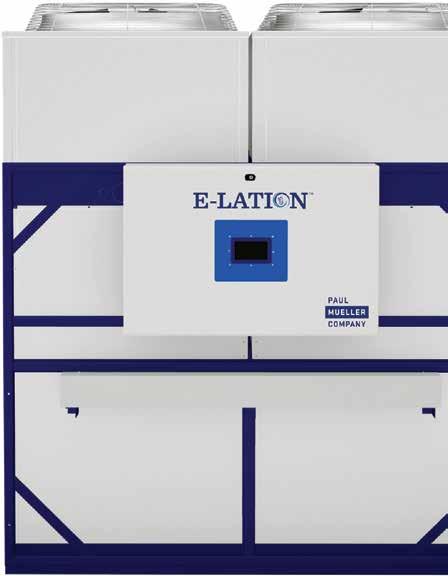
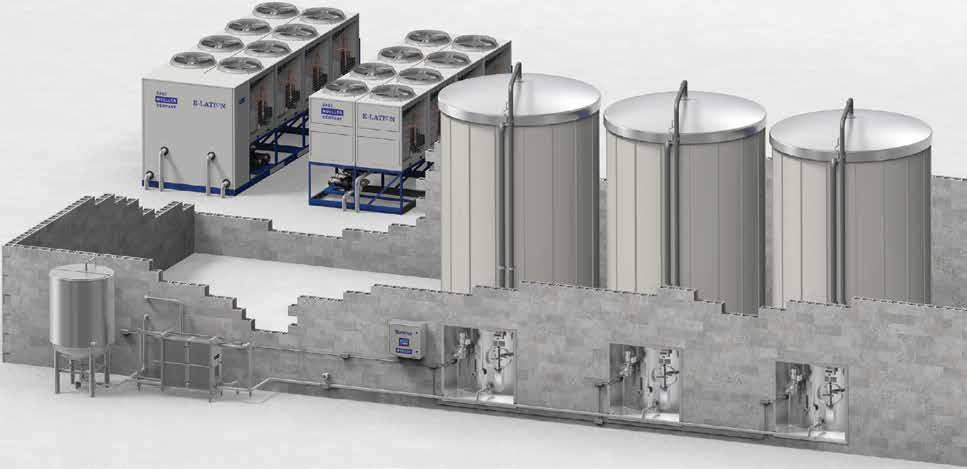
Advanced Dairy Spring Valley, WI; Mondovi, WI; West Salem, WI; Mora, MN; Pierz, MN; Wadena, MN; St Charles, MN
Advanced Dairy Spring Valley, WI; Mondovi, WI; West Salem, WI; Mora, MN; Pierz, MN; Wadena, MN; St Charles, MN
Central Ag Supply Juneau, WI; Baraboo, WI
Central Ag Supply Juneau, WI; Baraboo, WI
Eastern Iowa Dairy Systems Epworth, IA
Eastern Iowa Dairy Systems Epworth, IA
Ederer Dairy Supply Plain, WI
Ederer Dairy Supply Plain, WI
Fuller’s Milker Center Lancaster, WI; Richland Center, WI
Gorter’s Clay & Dairy Equipment
Fuller’s Milker Center Lancaster, WI; Richland Center, WI
Pipestone, MN
J. Gile Dairy Equipment, Inc.
Gorter’s Clay & Dairy Equipment
Professional
Pipestone, MN
Cuba City, WI
Leedstone
J. Gile Dairy Equipment, Inc.
Cuba City, WI
Melrose, MN; Glencoe, MN; Plainview, MN; Menomonie, WI; Sparta, WI
Leedstone
Melrose, MN; Glencoe, MN; Plainview, MN; Menomonie, WI
Lely Center Monroe Monroe, WI
Professional Dairy Services Arlington, WI
Redeker Dairy Equipment Brandon, WI
Sioux Dairy Equipment Rock Valley, IA; Colton, SD
Stanley Schmitz Inc. Chilton, WI
Midwest Livestock Systems
Lely Center Monroe Monroe, WI
Zumbrota, MN; Renner, SD; Menomonie, WI; Kaukauna, WI; Weston, WI
Midwest Livestock Systems
Zumbrota, MN; Renner, SD; Menomonie, WI; Kaukauna, WI; Weston, WI
Monroe Westfalia Surge Monroe, WI
Monroe Westfalia Surge Monroe, WI
Total Dairy Service Kewaunee, WI
Tri-County Dairy Supply Janesville, WI
United Dairy Systems West Union, IA; Monticello, IA
West Union, IA; Monticello, IA
By Jeff Coulter University of Minnesota
Optimizing planting rate is important or corn silage since it inuences silage yield, silage quality and protability. In general, silage dry matter yield increases as the plant population increases but gains in DM yield become smaller when the plant population approaches that which maximizes grain yield. In eld trials where a hybrid is planted at multiple planting rates, overall silage quality as calculated by milk per ton is typically greatest at the lowest planting rate due to larger ears and thicker stalk. Larger ears increase starch concentration of silage, while thicker stalks have a greater ratio of pith to rind. The pith is the soft center portion of stalk that is more digestible, while the rind is the outer portion of stalk that is less digestible. As the plant population increases, ears become smaller and stalks become thinner, thereby decreasing milk per ton. However, milk per acre, calculated as silage DM yield multiplied by milk per ton of DM, increases with increased plant population, typically up to a plant population that is higher than that used for grain production, at least for dual-purpose hybrids. Optimizing planting rate for corn silage comes down to balancing silage quality and silage yield, and this is complicated by factors such as the type of silage hybrid used.
In this article, optimum planting rates for dual-purpose, brown midrib and leafy silage hybrids are discussed following a review of recent research,


















The number of recent eld trials that evaluated multiple planting rates has been far fewer for silage corn compared to grain corn. Results have also been less consistent for silage corn, with several trials showing no signicant differences among contrasting types of hybrids in their response of silage yield or quality to planting rate. Additionally, optimum planting rate for corn silage in some trials have been exceptionally high. The limited number of trials, coupled with their variability in geographic location, year, weather conditions, hybrid type and hybrid relative maturity all contribute to the inconsistency in results. However, typically optimum planting rates for corn grown on highly productive soils are summarized below. For grain corn, economic optimum planting rates typically range from 34,000-36,000 seed/ac. For dualpurpose hybrids, which are taller and later-maturing than grain hybrids, milk per acre is typically maximized with a planting rate that is 2,000-3,000 seeds/ acre higher than those used for grain hybrids. This is because the higher planting rate typically reduces milk per ton by 2%-4% but increases silage yield by 5%-10%.
Brown midrib corn hybrids have brown coloration on the leaf midrib, stalk rind and stalk pith. They have a naturally occurring gene that reduces lignin in stalks and leaves by about 25% and in some cases by up to 40%. Since lignin is the part of ber that is not digestible, lower lignin levels mean more ber is available for digestion. This leads to greater energy from silage and therefore less need for grain in



Corn hybrid type
Optimal planting rate (seeds/ac)
Grain 34,000-36,000
Dual-purpose silage 2,000-3,000 higher than that for grain hybrids
Brown midrib silage 30,000-32,000
Leafy silage with 10-11 leaves above the ear 28,000
Leafy silage with 8-9 leaves above the ear 30,000
the ration, which can result in healthier cows. Since BMR hybrids have less lignin, their standability is typically not as good as non-BMR hybrids, but that is of limited concern because BMR hybrids are harvested earlier than grain hybrids, To optimize milk per acre and silage quality, the planting rate for BMR hybrids should typically be 30,000-32,000 seeds/acre.
Leafy silage hybrids generally have 8-11 leaves above the ear, while dual-purpose hybrids typically have 5-6 leaves above the ear. On a per-plant basis, leafy silage hybrids have approximatley 70% more leaf area above the ear and 30%-40% more total leaf area than dual-purpose hybrids. Leafy hybrids are larger plants with more leaf are, the optimal planting rate for leafy hybrids is much lower than that for dual-purpose hybrids, For leafy corn silage hybrids with 8-9 leaves above the ear, the optimal planting rate is approximately 30,000 seeds/acre. For leafy corn silage hybrids with 10-11 leaves above the ear, the optimal planting rate is approximately 28,000 seeds/ acre. When leafy hybrids are planted at












higher densities, they have lower starch concentration and lower digestible ber due to smaller ears, thinner stalks and a lower grain-to-stover ratio. Additionally, leafy hybrids mature more rapidly at high planting rates. Therefore, it is important to avoid planting leafy hybrids too thick
With the high cost of seed, it is critical to optimize planting rates or corn silage For example, at $200 per 80,000 seeds, changing the planting rate by 2,000 seeds/acre affects the cost of production by $7.50/acre. At the same time, lost silage yield due to a planting rate that is too low or too high, or poorer silage quality due to a planting rate that is too high can signicantly affect milk production and protability. To ne-tune optimal planting rates for your farm, consider doing some onfarm research. This could be done by planting a eld at your normal planting rate and then planting a few strips in the eld at a lower and higher planting rates. In strips where there are two
Table 1. Guidelines for op mal corn plan ng rates on highly produc ve soils in the Midwestern U.S. Turn to

Con nued from CORN SILAGE | Page 14 ears per plant, each with harvestable grain, the planting rate was likely too low. In strips where there are barren plants or small ears that are poorly lled, the planting rate was likely too high. Also look for stalk lodging and differences in maturity. Then measure silage yield from each strip and collect a silage sample from each strip for analysis. Working with an agronomist or livestock nutritionist may be helpful for getting the samples packaged correctly and shipped to the laboratory, for selecting the appropriate variables for the laboratory to analyze, and for interpreting results and making decisions on whether standard planting rate should be changed for the next year.



Credit to Forage Focus Midwest Forage Association

A propiatery blend of immunity and production supporting ingredients helping your cows achieve hgher butter fat tests.

• Silostop® Oxygen Barrier Films
• Secure Covers ® • Silostop Gravel Bags
Contains:
• Beta Glucans
• Live Cell Boulardii Yeast
• Yeast Culture
• Bacillus (6 strains)
+ polyphenols
• Methionine
• MCM- (Manna-hydrolyzed Copra Meal)
• MOS- Pre/Post biotic
• Sorbiam







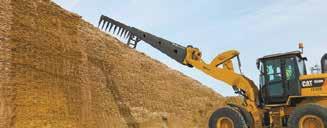























By Emily Breth emily.b@star-pub.com
ST. CLOUD, Minn. — Reducing greenhouse gas emissions from cars and cows alike is an endeavor on the minds of some in the dairy industry. Brad Heins, a professor of organic dairy production at the University of Minnesota, shared ways the university is experimenting to reduce methane emissions from cattle at the West Central Research and Outreach Center in Morris.
Heins started his presentation at the Minnesota Organic Conference Jan. 9 at the St. Cloud River’s Edge Convention Center by sharing about a study on the effects of organic red seaweed on methane production.
The study was conducted from summer 2023 through January 2024. The research center worked with Symbrosia Inc., a Hawaii-based company that produces organic red seaweed. Their product, SeaGraze, has been in a variety of trials to determine its effect in reducing methane
emissions from cattle.
“It has a higher content of bromoform and that is the compound that is used to help reduce the methane,” Heins said. “What they recommended for a rate was … a very small amount of seaweed that will help reduce the methane.”

Bromoform helps reduce methane emissions by adapting the way the cow reacts while ruminating. Instead of producing methane, a higher content of hydrogen is produced, eventually reducing the methane as the cows adjust to the diet. Cows in the study went from releasing around 100 grams of hydrogen per day to close to 700 grams.
Heins monitored the gas levels of the control group and the experimental treatment group, which were on pasture for six months and consumed the seaweed as a supplement in their grain.
Initially, there was little difference between the groups as the SeaGraze group’s rumens started to adapt to the new product. Once adaptation was complete, the experimental group began showing reduced methane. Halfway through the study, the control group was sitting at

Collecting Organic Slaughter Cows & Bulls 2nd & 4th Tuesday every month
Regular sales each Tuesday at 6 pm and Thursday at 1 pm.


close to 400 grams of methane emitted a day while the experimental group was around 175 grams of methane a day.
The methane from cows was recorded through the use of a green feed machine. These work by capturing the methane cows burp out while they are eating grain provided to them in the machine. The machine also measures the cow’s carbon dioxide, oxygen and hydrogen alcohol levels.
As the study continued, the SeaGraze experimental group continued to stay lower than the control group with an average of 35%-40% less methane emissions, about half way through the study. Across the six months of the trial the results became less pronounced. The control group averaged 364 grams of methane a day and the SeaGraze group was around 294 grams, representing an average reduction of about 20%.
During the middle of the study, as the animals’ bodies modied to the seaweed, there was a slowing of the reduction of methane.
“It started going back because their bodies adjusted to it and started producing methane again,” Heins said. “A lot of studies with methane look at short time periods and then say, ‘We can get 40-50% reduction.’ But we don’t know what happens later. They just assume.”
The experimental group of cattle received the seaweed throughout the six months of the trial. Heins said they saw a secondary adjustment period to the seaweed where the cattle started to produce a higher amount of methane. He said it was as if the seaweed was only hindering the production of methane which caused it to be reduced.


Heins said they plan to do more studies over longer periods of time to see the longer-term effects of the seaweed.
With the cattle consuming higher levels of bromoform, bromide levels in milk also increased. The control group had a bromide level of 1.47 ng/L of milk while the other group had around 17 ng/L.
The increased level of bromide in the milk appears to have no harmful effect on humans at a normal rate of consumption. Meat harvested from cattle consuming more bromoform was also tested, showing less of an increase.
During the study, Heins also monitored the cows’ production, components and body condition. Overall, despite the secondary adjustment period to the seaweed which resulted in an increase in methane reduction, overall, the experimental group’s data was still positive for methane reduction.
“What we had (from the SeaGraze group) was they had less intake, the same amount of milk production and less methane,” Heins said. “These cows were more efcient (during the trial).”
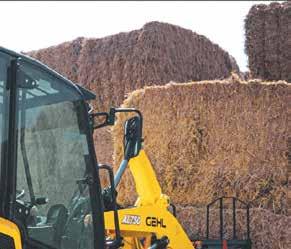




By Sarah Middendorf sarah.m@star-pub.com
JUNCTION CITY, Kan. — Unlike many other dairy farms, Hildebrand Farms Dairy sells its milk directly to consumers. The dairy milks cows and bottles their milk in glass containers all on the farm.
“We are a little different than most farms in our region,” said Melissa Hildebrand-Reed.
Hildebrand-Reed, a daughter of one of the farm owners, helps operate the business. Her parents, Alan and Mary, own the farm with Alan’s brother, David, and his wife, Kathy. David and Kathy’s son, Tod, also plays a role in the daily operation of the farm. They milk 120-150 cows and farm over 2,000 acres. The cows are milked in a double-6 parlor and housed in a freestall barn.
The family built a milk processing plant in the mid-2000s and bottled their rst glass jar of milk in October 2008. They primarily bottle uid milk for the wholesale market, but churn butter and ice cream to sell in their on-farm store as well.
While Hildebrand-Reed is running the daily operations of the plant and managing the cows, Alan is running the farm and works on the feed side of the dairy. David and Kathy are involved in the crop operations and Hildebrand-Reed’s cousin, Tod, helps wherever needed on the farm.
to HILDEBRAND | Page 18



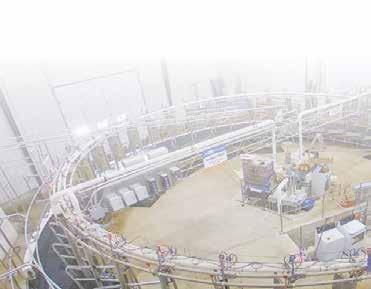






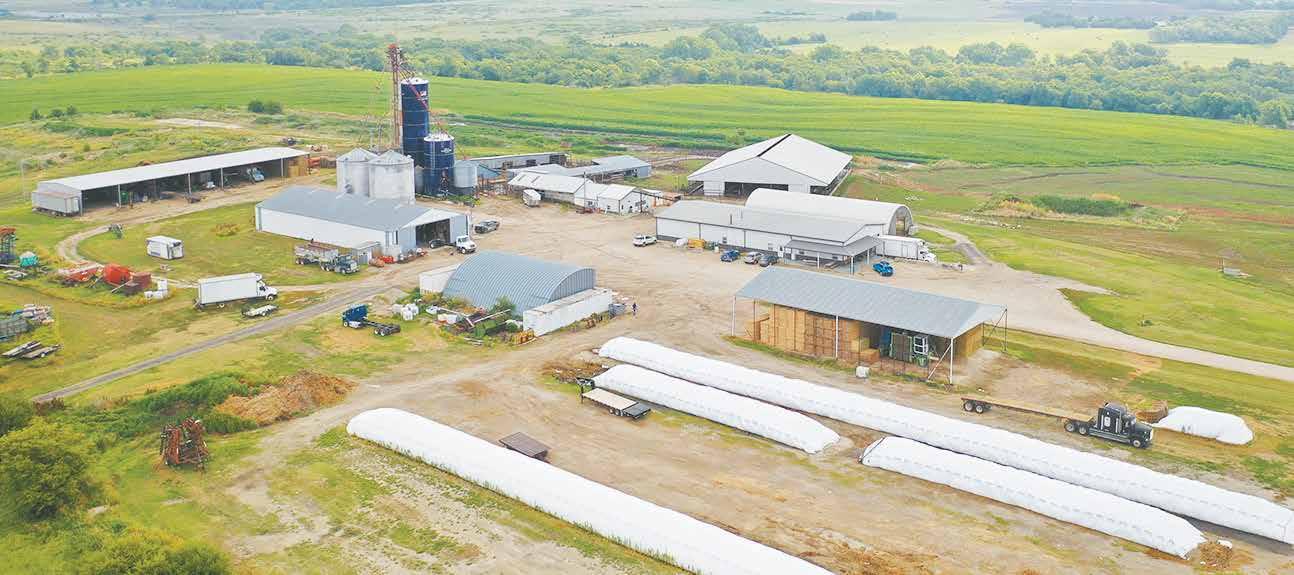

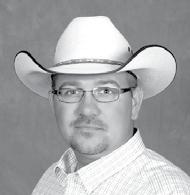
Hildebrand-Reed is the fourthgeneration. Her great-grandfather, Arnold, established the farm with the purchase of four cows. Milk was sold to a processor in town. Her grandpa, Carl, took over and built the farmsite of today, which is located up the hill from the original homestead. Finally, ownership was passed down to Alan and David.
“My dad and my uncle really took and grew and expanded the farm into what it is,” HildebrandReed said.
Selling milk directly to consumers affects their managment.
“That drives a lot of our decision making and even how we dairy differently,” Hildebrand-Reed said.
“Once they built the plant it was so cool to see the growth and everything that we were doing here it was hard to look away,” Hildebrand-Reed said.
Alan and David built the processing plant when Hildebrand-Reed was not actively working on the farm.
“They took the ‘If we build it, they will come approach,’” Hildebrand-Reed said. “They got lucky and I did.”
Aside from family, they also have 20 employees who work at the plant and the dairy operation.

This herd has a 74-pound tank average, 4.5 fat, 3.4 protein and our somatic cell count is 150,000. This is young and promising herd of cows. There are 45 first lactation and 40 second lactation animals on this sale. The Keranen’s milk their cows twice a day and test with DHIA. The cows are housed in a freestall barn and fed a high forage TMR. For many years, the Keranens used a mixture of AI breeding and bull breeding. In the last three years all the cows have been AI by the likes of Tahiti, Alphabet, Barclay and Milky and the heifers have been bull bred. Darren said he has been careful in bull selection and likes to choose bulls that come from good cows and good cow families. They vaccinate at dry off with Ultrabac and Vira shield.
“I first started milking with 10 cows with my brother, I slowly grew my herd for a few years then it worked out for me to buy the home farm where I grew up. After a lot of updating my wife and I had our own farm. To this day my brother and I still work together putting in and harvesting crops together. Over the years of building up my herd I have purchased most of my cows from two local herds. They have always sold me good cows for a fair price. There were a few herd dispersals over the years that I bought a few cows from. Overall my herd of cows have treated me very good. It has been a very difficult decision to make to sell the cows but when your
is not into

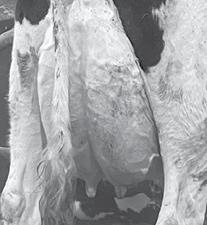
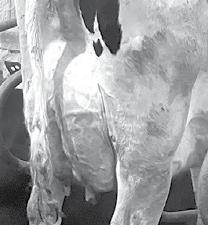

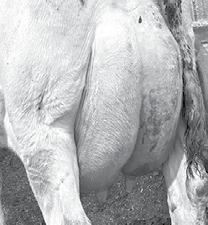

They try to get peak milk during their seasonal demand, which is September through December.
It’s very much a business that can support not only just two families as it was originally, but it can support me and my cousin as we come back to the farm. Then we have several other families (we can support) as we continue to grow.”
MELISSA HILDEBRAND REED
DAIRY FARMER
Along with selling their dairy products in their onfarm store, they also provide tours and public events for people to get an onfarm experience.
Hildebrand-Reed said when she was in high school, she had an interest in advocating for agriculture and farming.
“I went to college as an ag communications major at K-State in hopes to someday share agriculture with the world,” Hildebrand-Reed said. “By selling directly to consumers, I am able to do that in a huge way and I absolutely love that part of my job.”
Hildebrand-Reed said she expressed interest in high school in coming back to the farm.
“It’s very much a business that can support not only just two families as it was originally, but it can support me and my cousin as we come back to the farm,” Hildebrand-Reed said. “Then we have several other families (we can support) as we continue to grow.”
The dairy landscape in Kansas is evolving. When Hildebrand-Reed was younger, there were roughly 20 dairy farms in Geary County. Now, Hildebrand-Reed said they are the last dairy within a 4-county radius.
“There’s not quite the demand as there once was or the amount of dairy that there once was,” Hildebrand-Reed said.
Hildebrand-Reed said Kansas has different types of terrain. Their farm is located in the Flint Hills.
“We are fortunate to have nice river bottom ground that’s great for farming and helps support our herd,” Hildebrand-Reed said.








With evolving the dairy in mind, they are in the process of expanding their current freestall barn to house two Lely robots.
“It’s a big investment and it’s awesome, (but) scary,” Hildebrand-Reed said.
Although they have a lot of moving parts between the processing plant and the dairy itself, Hildebrand-Reed still enjoys spending time with the
cows. “When I come back after a hard week and I reect on the best parts of that week, it’s always going to be the times that I work with the cows,” Hildebrand-Reed said. “Despite all the really cool things we are doing that’s where I am probably my happiest. That’s where I’m nding my most comfort in what I do.”










Farm-Rite
Farm-Rite


The Minnesota DHIA rolling herd average production yields in 2024 reached a new all-time high of 25,895 milk, 1,123 fat, and 853 protein pounds. Especially noteworthy is the record solids percentages, which were 4.34% for butterfat and 3.29% for protein. The SCC ended the year at an average of 195,000. The dollar value is weighted by the pay prices for these four components and was also a new record of $5,653. For 2024, the dollar value formula saw a major increase in the value of butterfat relative to protein.
The 2024 Dollar Value formula is: (0.0150 x milk pounds) + (3.38 x fat pounds) + (1.68 x protein pounds) + [(350SCC/1000) x 0.00090 x (milk pounds/100)]
Below are the highest-ranking herds within each county afliate, alphabetically by county and herd owner. Congratulations to all!







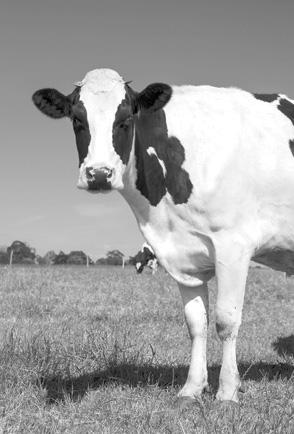
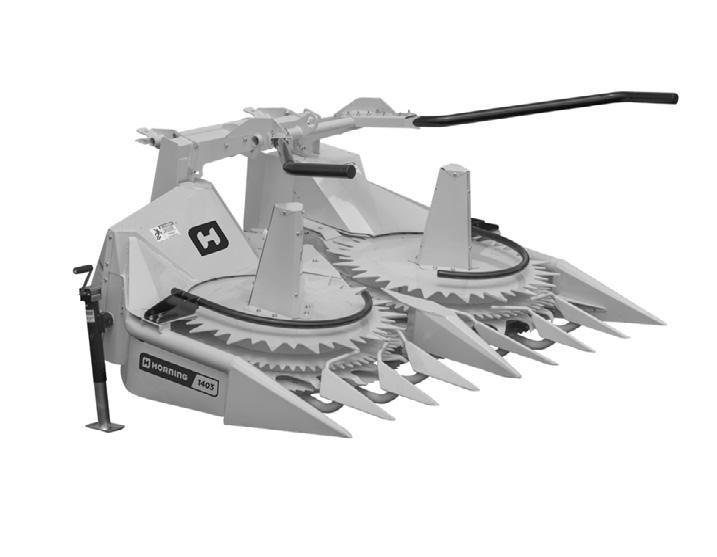

the headaches. Now that’s freedom.






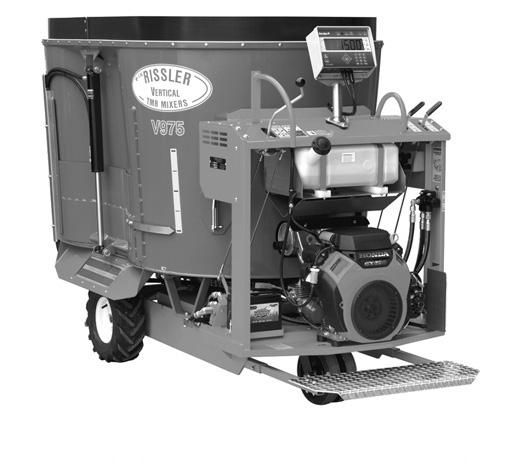








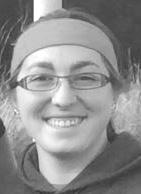








Brian Louks Medford, MN 1st year 507-951-8590 Stephanie Tienter Harmony, MN 15 Years 507-993-9115













By Amy Kyllo amy.k@star-pub.com
ROCHESTER, Minn. — Sara Davis wants dairy farmers to know the most up-to-date, evidence-based treatments for common fresh cow ailments.
“There’s a lot of ways to treat fresh cows,” Davis said. “Some historical (treatments) have been hanging around for a while. … If you’re going to take time to treat the cows, hopefully you’re doing ones that give the most benet.”
Davis, who has a doctorate in veterinary medicine, is a faculty member at the College of Veterinary Medicine at the University of Minnesota. Davis presented “Fresh Cow Care 2.0: En-gaging Strategies for Effective Treatment and Management” at the Form-A-Feed Dairy Conference Jan. 16 at the Mayo Civic Center in Rochester.
Davis presented about four common ailments: retained placenta, metritis, milk fever and ketosis. For each problem, Davis shared about what is “in” for treatment and what is “out” for treatment based on current research data.
Starting with retained placentas, Davis said an “out” for treatment is manual removal. This can cause damage, open the space for worse infections and de-








crease fertility.
“People like to do it because it’s out of sight, out of mind,” Davis said. “It might feel better to us that we took the retained placenta out, but we’re actually probably making it worse for future outcomes for that cow.”





Some producers look at discharge, but she said the most reliable indicator is smelliness.

Davis also said she discourages against putting anything inside the uterus such as uterine ushes or boluses.
“We’re feeling good that we’re doing something, but (there is) little evidence to show that it’s actually changing any of the outcomes,” she said.
She also said she suggests not to blanket treat retained placentas with antibiotics. Instead, reserve antibiotics for high-risk cases, such as cows with a fever or that had a difcult calving.
Additionally, she discouraged the use of prostaglandin or oxytocin for retained placentas. The receptors in the uterus for oxytocin or corpus luteum for prostaglandin are gone by the time a retained placenta is identied, so there is nothing for the drugs to act on.
Often, she said leaving the retained placentas alone and monitoring is best. She said it is optimal to wait to treat retained placenta until there is metritis.
“In general, a lot of these cases resolve on their own with time and benign neglect,” Davis said.
Davis said metritis can be challenging to screen because symptoms vary.
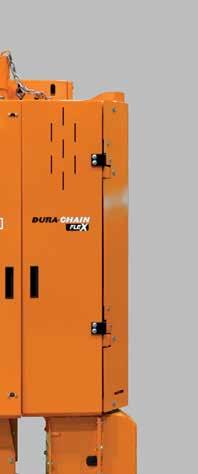
“Metritis is one of those hard conditions that can be this elusive thing to train new employees on,” Davis said. “If it’s smelly and the cow appears generally sick, (that is) one that’s going to benet from treatment.”
She said basing treatment solely off fever misses some cases of metritis that do not present a fever.
“Denitely treat those cases that are having fever, but don’t only rely on that,” she said.
This is because not all cows with fetid discharge have a fever.
She said proven antibiotics for metritis include: ceftiofurs, ampicillin and penicillin. She said to pair with pain meds for cow comfort and to make sure to follow the label when using ceftiofur products.
For milk fever, Davis emphasized being careful on the amount and method of giving calcium. She said farmers should not treat cows with more than one form of intravenous calcium in a single treatment and not treat cows with more than one bottle of calcium at a time. She also said to only IV cows that are already down or about to go down.
“Too much calcium can cause the heart problems,” Davis said. “The other issue is, we’re probably actually going to create a rebound hypocalcemia. So, what we do is we give a bunch of calcium and their calcium levels rise. The body says, ‘Oh, I don’t need to make calcium available anymore.’ It stops, and then it plummets … (and) our cows go back down.”
She said down cows should receive one half bottle up to one bottle of calcium and then use a calcium bolus or subcutaneous calcium 12–24 hours later as a follow up if needed.
When it comes to ketosis, Davis said farmers should not treat all cows that are positive based off beta-hydroxybutyrate levels, because sometimes high BHB levels are actually just associated with the cow’s rise in milk. She also said it is not necessary to screen all cows for ketosis, instead she said farmers should only screen those cows that appear to be sick.
She said looking at other signs besides BHB, like low milk production or low rumination, could identify cows that could benet from treatment.
Farmers should not use dexamethasone for ketosis treatment, she said. Data shows this is not an effective drug, she said, and that cows could be harmed by receiving too much steroids.
The best treatment of ketosis for cows with BHB levels between 1.2-3 is propylene glycol for 3–5 days, she said. For cows with BHB levels over three, she said to use dextrose IV, but to follow up this treatment with propylene glycol.
Overall, Davis’ presentation helped farmers to determine whether their protocols follow current best practices. She said she encourages producers to consult with their veterinarian to determine what is most appropriate for their farm.
“It’s still good to rethink maybe what you (have) historically done,” Davis said. “Make sure that what you’re doing to the cow actually helps the cow, not just something that we’re doing because we think we’re doing something.”




U.S. Secretary of Agriculture Brooke Rollins announced on National Agriculture Day that the U.S. Department of Agriculture is issuing up to $10 billion directly to agricultural producers through the Emergency Commodity Assistance Program for the 2024 crop year. Administered by USDA’s Farm Service Agency, ECAP will help agricultural producers mitigate the impacts of increased input costs and falling commodity prices.
Authorized by the American Relief Act, 2025, these economic relief payments are based on planted and prevented planted crop acres for eligible commodities for the 2024 crop year. To streamline and simplify the delivery of ECAP, FSA will begin sending pre-lled applications to producers who submitted acreage re-
The commodities below are eligible for
ports to FSA for 2024 eligible ECAP commodities soon after the signup period which opened on March 19. Producers do not have to wait for their pre-lled ECAP application to apply. They can visit fsa. usda.gov/ecap to apply using a login.gov account or contact their local FSA ofce to request an application.
Eligible producers must report 2024 crop year planted and prevented planted acres to FSA on an FSA-578, Report of Acreage form. Producers who have not previously reported 2024 crop year acreage or led a notice of loss for prevented planted crops must submit an acreage report by the Aug. 15 deadline. Eligible producers can visit fsa.usda.gov/ecap for eligibility and payment details.



















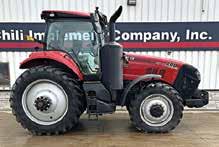




1 small onion, chopped
1 tablespoon butter
3 cups chicken broth
3 medium carrots, cut into slices
2 medium potatoes peeled and cubed
2 cups cooked chicken, cubed

2 tablespoons fresh parsley, minced
Salt and pepper to taste
1/4 cup our
1 cup milk
1 8-ounce package cream cheese, softened and cubed
In a large saucepan, sauté the onion in butter. Add broth, carrots and potatoes; bring to a boil. Reduce heat, cover and simmer for 15 minutes or until vegetables are tender. Add the chicken, parsley, salt and pepper; heat through. Combine our and milk until smooth; add to the vegetable mixture. Bring to a boil, cook and stir for 2 minutes until thickened. Reduce heat. Add cream cheese; cook and stir until melted. Makes 8 servings.
From the kitchen of Cheryl Seibert, Sebeka, Minnesota, Wadena County
2/3 cup butter
2/3 cup brown sugar
2 eggs
1 1/2 cups oatmeal
1 1/2 cups our
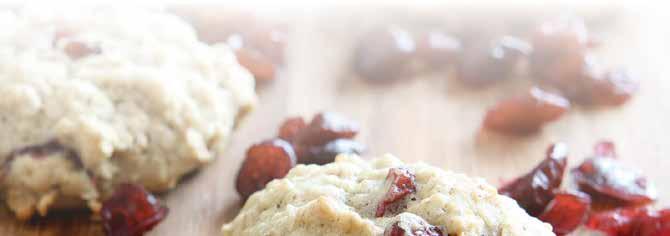
1 teaspoon baking soda
1/2 teaspoon salt
2/3 cup craisins
2/3 cup white or chocolate chips
Preheat oven to 350 degrees. Beat butter and sugar until uffy. Add eggs; mix well. Combine oats, our, baking soda and salt. Add to buttersugar mixture. Stir in dried cranberries and chips. Drop by rounded teaspoons on cookie sheets. Bake 10-12 minutes. Makes 2 ½ dozen cookies.
1 3-ounce package strawberrybanana or plain strawberry gelatin
1 3-ounce package cream cheese
1 cup boiling water
1 10-ounce package frozen strawberries
1 envelope whipped topping mix
Combine rst three ingredients; beat until smooth. Add frozen strawberries; let stand until slightly thickened. Prepare whipped topping according to directions. Fold into gelatin mixture. Chill at least 4 hours.
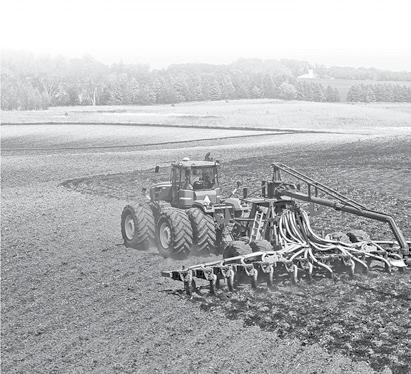









































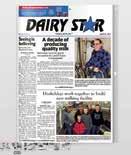
















‘22 Gehl RT165, T-Bar, Dsl, 15” All Season Tracks, 2100 Lift Cap, C/H/A, 2 Spd, 1,884 hrs ......$37,800
‘17 Gehl RT250, ISO/Dual H-Ctrls, Dsl, Camso Tracks HXD 450x86x58, Both Standard and Hi-Flow Hyd, 2 Spd, Hydra Glide, 295 hrs, Warranty till 6-30-26 or 1000 hrs ................................$48,500
‘18 Gehl R220, JS Ctrls, Dsl, 2200 Lift Cap, SS, 4,854 hrs ...............................................$17,500 Gehl V400, T-Bar Ctrls, Dsl, 4000 Lift Cap, C/H/A, 2 Spd, 2,570 hrs ..............................$37,750
‘19 Gehl V270, JS Ctrls, 73HP Dsl, 2700 Lift Cap, C&H, 2 Spd, 250 hrs ...........................$57,500
‘19 Gehl R260, T-Bar Ctrls, Dsl, 2600 Lift Cap, C/H, 2 Spd, 1,400 hrs .........................$39,500 Gehl RT135, ISO Ctrls, 46HP Dsl, 1350 Lift Cap, C/H/A, SS, 107 hrs. .....................................$46,500
‘21 Gehl RT165, T-Bar Ctrls, Dsl, 15” All Season Tracks, 2150 Lift Cap, C/H/A, 2 Spd, 2,015 hrs......................................................$36,000
‘20 Gehl RT165, T-Bar H-Ctrls, 70HP Dsl, 15.5” All Season Tracks, 2100 Lift Cap, C/H/A, 1,875 hrs......................................................$36,800
‘21 Gehl R190, T-Bar Ctrls, 69HP Dsl, 2000 Lift Cap, C&H, 2 Spd, 1,184 hrs. .................$41,500



Gehl 4835, T-Bar Ctrls, Deutz, C & H, SS, 4,600 hrs..................................................... $15,500
‘23 Manitou 1900R, H/F JS Ctrls, Dsl, 2100 Lift Cap, C/H/A, 2 Spd, 185 hrs .................................$48,500 ‘22 Manitou 1650RT, H/Ft Ctrls, Dsl, 12” Tracks, 1650 Lift Cap, C/H/A, 2 Spd, 169 hrs .........$56,500 ‘21 Mustang 1650R, H/F Ctrls, Dsl, C/H/A, SS, 3,640 hrs ...............................................$29,900 ‘18 Mustang 1650RT, H/F Ctrls, Dsl, 2350 Lift Cap, C/H/A, 2 Spd, 975 hrs ..................$47,500
‘20 Mustang 1650RT, H/F Ctrls, 68HP Dsl, 2350 Lift Cap, C/H/A, 2 Spd, 1,517 hrs ......$38,700
‘19 Mustang 2150RT, Hyd Pilot- H Ctrls, 72HP Dsl, 18” All Season Tracks, 3000 LBS At 50% Tip Load, C/H/A, 2 Spd, 660 hrs .................................$44,900
‘16 Mustang 2200R, ISO/Hyd JS Ctrls, 72HP Dsl, 2200 Lift Cap, C/H/A, 2 Spd, 3,375 hrs ......$35,500
‘18 Mustang 2200R, H/F Ctrls, Dsl, 2200 Lift Cap, C/H/A, 2 Spd, w/Bucket, 986 hrs ................$40,300 Bobcat 7753, H/Ft Ctrls, Dsl, 1700 Lift Cap, SS, 6,300 hrs......................................................$12,500
‘15 NEW HOLLAND L220, Ft Ctrls, Dsl, 2000 Lift Cap, C/H/A, 2 Spd, Set of Steel Tracks, New Engine At 3191 Hours, 903 Hours On New Engine .$24,500
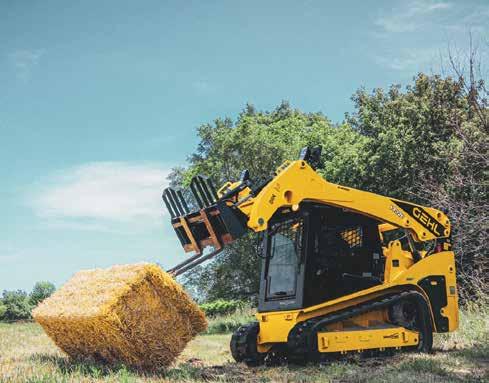






‘14 Kuhn Knight 2054VB, 1 3/8 1000 PTO, 425 Tires ......................................................$45,000 Kuhn Knight 8132, 1 3/8 1000 PTO, 3200 Gals ....................................................$17,400
‘08 Kuhn Knight 8132, 3200 Gals, 645 Cu Ft Heaped ..........................................................$7,500
‘09 Meyers VB750, 482 Cu Ft Struck..........$29,000
‘10 Meyers VB440, 425/65R22.5 Tires, 440 Bu ........................................................$28,900
‘05 Meyers 3550, 550 bu, Upper Beater, Hyd Drive Apron, Twin Apron, 80”x36”x204” Box Dimensions ..........................................$18,500
‘19 Doda AFI-35, 1 3/8 1000 PTO,6” .............$7,500
‘20 Artex SBX800, 800 Cu Ft, Guillotine Endgate, 88C Apron Chain, Hyd Apron Pressure Relief Kit, Heavy Duty Vert Beaters, Teeth & Rippers Updated ......................................................$57,500
‘15 Hagedorn Hydra-Spread Extravert 5440, 684 Cu Ft Heaped, 440 Cu Ft Struck, Sequence Valve Flow Ctrl, Wood Rails, Stone Guard, Endgate ......................................................$37,500

hrs.$95,500




